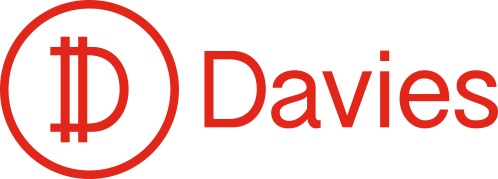Written by Davies on / Reading time: 5 minutes.
These changes, advances and revolutions have brought with them many terms that today we explain so that you understand each element of the cryptocurrencies.
Are you ready?
18 crypto terms you need to know
Here is a glossary of cryptocurrencies exclusively made to understand the general concepts surrounding the environment of virtual currencies:
DIGITAL ASSET. Also known as a digital resource. It can be held by anyone in a digitized way and therefore has an associated right to use it. It is a kind of property in the form of a cryptocurrency that can be sold, bought or licensed. For example: a website, logo, or any other asset that has value to us.
ALTCOIN. Any currency other than a Bitcoin can be perfectly an altcoin, as it is used to refer to other supported cryptocurrencies. They are created with a simple process due to the open source of Bitcoin, allowing the ease of creating tokens without having to be creating a new blockchain network.
BLOCKCHAIN. It is a distributed transactional database that consists of a blockchain created to prevent a data from being modified once it is published. That's why it's a technology that increases transparency and security in transactions. It is achieved thanks to "peer-to-peer networks (P2P) with consensus generated through a proof-of-work algorithm (PoW)", as Blockchain España points out.
BITCOIN. It is the first cryptocurrency in history and was created in 2009 by Satoshi Nakamoto. It used to exchange goods and services in the form of money, a virtual currency with very clear security features and ease of exchange that has given rise to the so-called Internet of Value. It is a decentralized currency and produced by different people and companies around the world. Currently, 1 Bitcoin equals to 7,021, 42 euros.
DISTRIBUTED LEDGER. Multiple databases related and distributed in different spaces interconnected by a network. There is no central administrator and data is also not stored centrally, as is the case with banks. Here, the network is maintained by each node or participant.
CRYPTOCURRENCY. They're virtual currencies. Digital assets that can be exchanged and move away from the control of governments or financial institutions. Each person owns their coins, allowing financial access to all societies that live without resources, send or receive money quickly and safely between people living at a great distance, etc.
OPEN CODE. It is a software development model where collaboration is open. What does this mean? Thanks to this feature, the program code can be modified without restrictions, which opens a world of possibilities for programmers. They can create new cryptocurrencies from others, improve them, adapt them to needs and evolve. A clear example is the creation of Davies from Litecoin, based on Bitcoin.
SMART CONTRACT. They arise as an alternative to traditional contracts so that they can be executed and fulfilled on their own, automatically and without the need for third parties to be aware of them. Ethereum, for example, offers the ease of developing tokens, and through a smart contract, its bases can be created, reducing costs and making financing project much simpler.
DAVIES. It's a new cryptocurrency. Recent and with added value: it is endorsed by an institution created in Estonia. As its creator Daniel Garcia points out: "Most cryptocurrencies were supported by teams of altruistic people, but they had no companies behind them." This coin has been created as a fork of Litecoin and is characterized by its security and speed in transactions. Immediate – Simple - Safe.
DECENTRALIZATION. In the cryptocurrency universe, decentralizing means not having a central core, government, or financial institution that regulates these assets, which gives greater power and control over our money. It is not subject to central bank policies and is self-regulated in their own networks.
DAPP. They are decentralized applications that allow you to create services that are not managed by a single entity. On the contrary, they can be all the transactions that we carry out through the banks (transfer, loan, credits, etc.), but without their intervention. There is no presence of third parties to validate them. The first DApp was Bitcoin.
FORK. It is a branching that occurs when you take the source code of a project and create a new one from it. If the blockchain is divided into two incompatible strings, we are talking about a hard fork.
MINING. Issue new crypto-actives and confirm operations on the blockchain.
NODE. While the miner is the node that validates the transaction and creates the blocks, the node references each machine's computer network.
ICO —Initial Coin Offering. It has to do with the financing of projects, such as the birth and development of a new cryptocurrency.
CONSENSUS PROTOCOL. It is the algorithm that creates the rules that must be met by the blocks into the chain.
TOKEN. It is a unit of value. A digital asset hosted on a blockchain that allows its owner to attribute it to a third party through the blockchain.
WHALE. They are people who have many cryptocurrencies.
Very soon, we will be adding new concepts to our cryptocurrency glossary. Do you have any doubt of what we have share with you so far? We want to hear from you.
